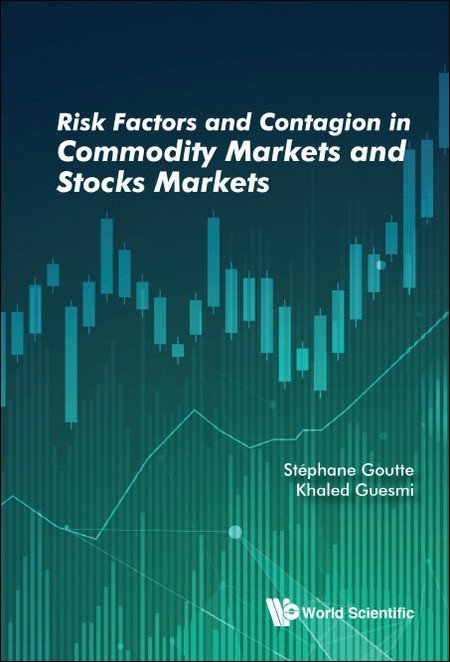System Upgrade on Tue, May 28th, 2024 at 2am (EDT)
Existing users will be able to log into the site and access content. However, E-commerce and registration of new users may not be available for up to 12 hours.For online purchase, please visit us again. Contact us at customercare@wspc.com for any enquiries.
The link between commodities prices and the business cycle, including variables such as real GDP, industrial production, unemployment, inflation, and market uncertainty, has often been debated in the macroeconomic literature. To quantify the impact of commodities on the economy, one can distinguish different modeling approaches. First, commodities can be represented as the pinnacle of cross-sectional financial asset prices. Second, price fluctuations due to seasonal variations, dramatic market changes, political and regulatory decisions, or technological shocks may adversely impact producers who use commodities as input. This latter effect creates the so-called "commodities risk". Additionally, commodities price fluctuations may spread to other sectors in the economy, via contagion effects. Besides, stronger investor interest in commodities may create closer integration with conventional asset markets; as a result, the financialization process also enhances the correlation between commodity markets and financial markets.
Our objective in this book, Risk Factors and Contagion in Commodity Markets and Stocks Markets, lies in answering the following research questions: What are the interactions between commodities and stock market sentiment? Do some of these markets move together overtime? Did the financialization in energy commodities occur after the 2008 Global Financial Crisis? These questions are essential to understand whether commodities are driven only by their fundamentals, or whether there is also a systemic component influenced by the volatility present within the stock markets.
Sample Chapter(s)
Preface
Chapter 1: Bubbles on Bitcoin Price: The Bitcoin Rush
Contents:
- Preface
- About the Editors
- About the Contributors
- Bubbles on Bitcoin Price: The Bitcoin Rush (Dominique Guegan and Marius-Cristian Frunza)
- Investigating the Association between Oil VIX and Equity VIX: Evidence from China (Anupam Dutta, Timo Rothovius and Jussi Nikkinen)
- The Predictive Power of Oil and Commodity Prices for Equity Markets (Leila Dagher, Ibrahim Jamali and Nasser Badra)
- Time-Varying Linkage between Equities and Oil (Beyza Mina Ordu-Akkaya, Adil Oran and Uğur Soytaş)
- Has the Causal Nexus of Oil Prices and Consumer Prices Been Asymmetric in the US during the Last Fifteen Decades? (Abdulnasser Hatemi-J and Youssef El-Khatib)
- Risky Financial Assets in Financial Integration and the Impacts of Derivatives on Banking Returns (Hasan Dinçer, Serhat Yüksel, Fatih Pınarbaşı and Mehmet Ali Alhan)
- The Risk-Sharing Paradigm in Islamic Financial System: Myth or Reality? (Jamel Boukhatem and Mouldi Djelassi)
- Commodity Markets' Asset Allocation with Robust Liquidity Risk Management Optimization Parameters (Mazin A M AlJanabi)
- Comovements and Integration in African Stock Markets (El Mehdi Ferrouhi)
- Interdependence or Contagion in Equity Markets? Evidence from Past Crises (Olfa Kaabia)
- Impact of Contagion on Proxy-Hedging in Jet-Fuel Markets (Dominique Guegan, Marius-Cristian Frunza and Rostislav Haliplii)
- Index
Readership: Students and professionals interested in the field of quantitative finance, commodity markets and contagion.
























